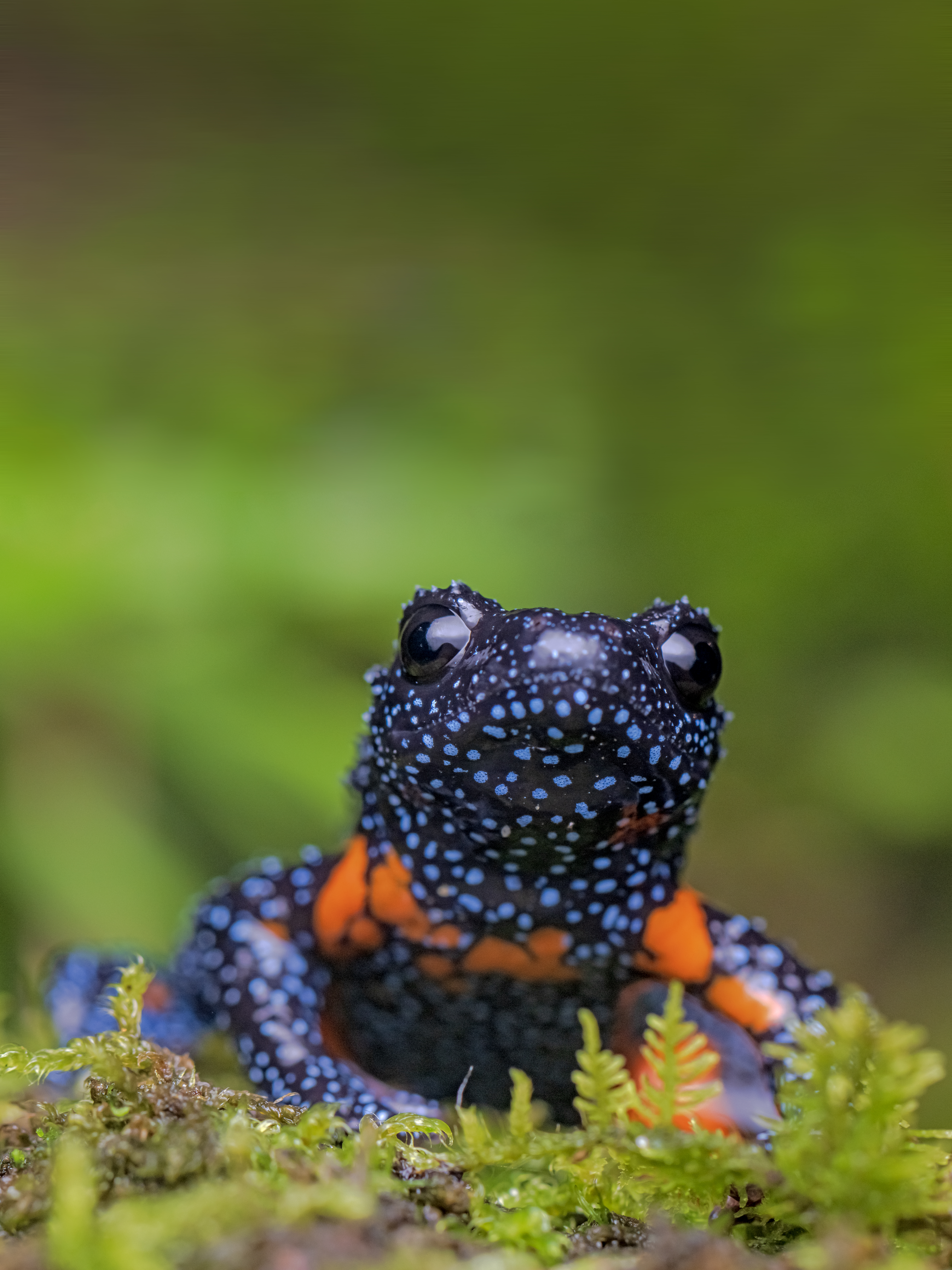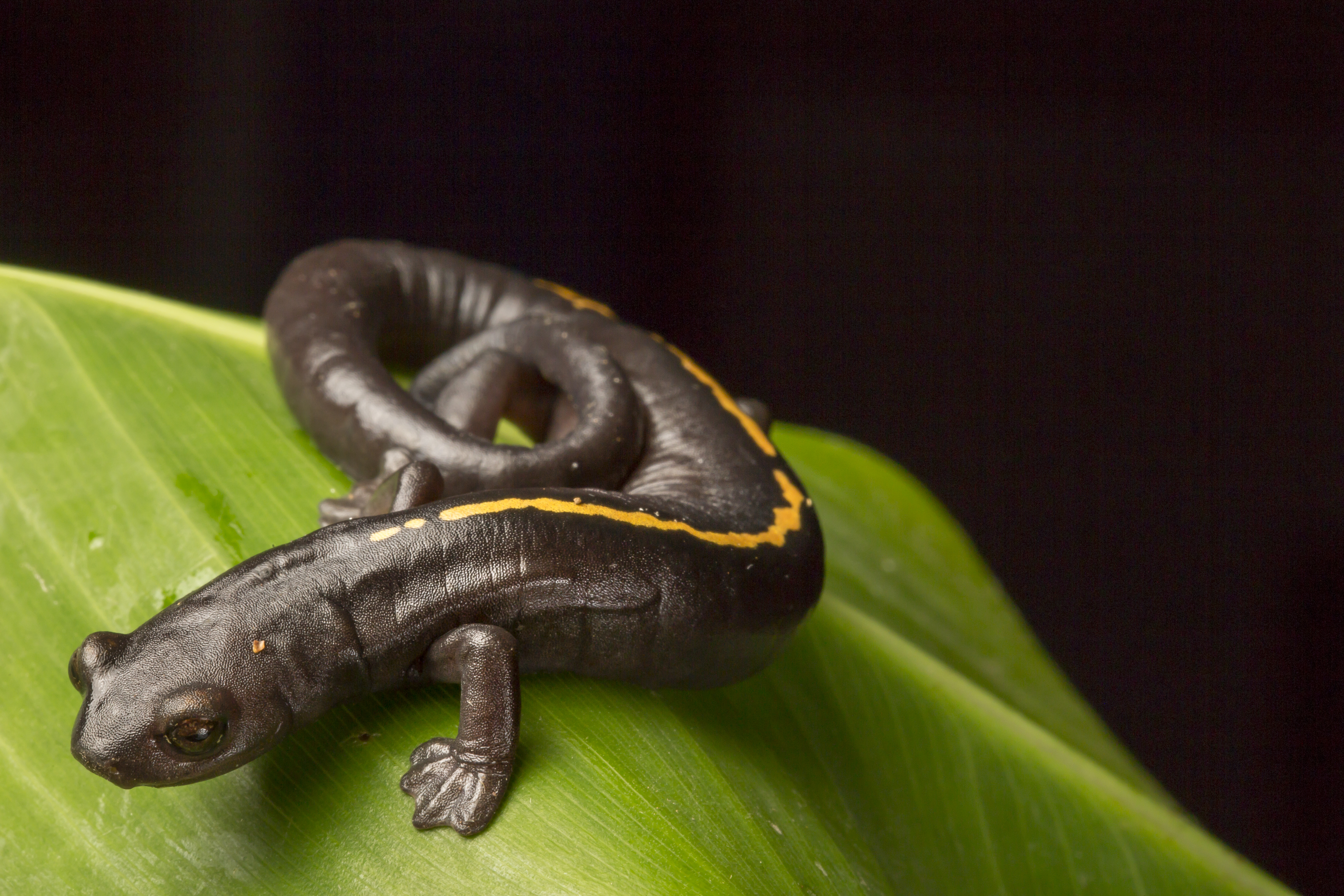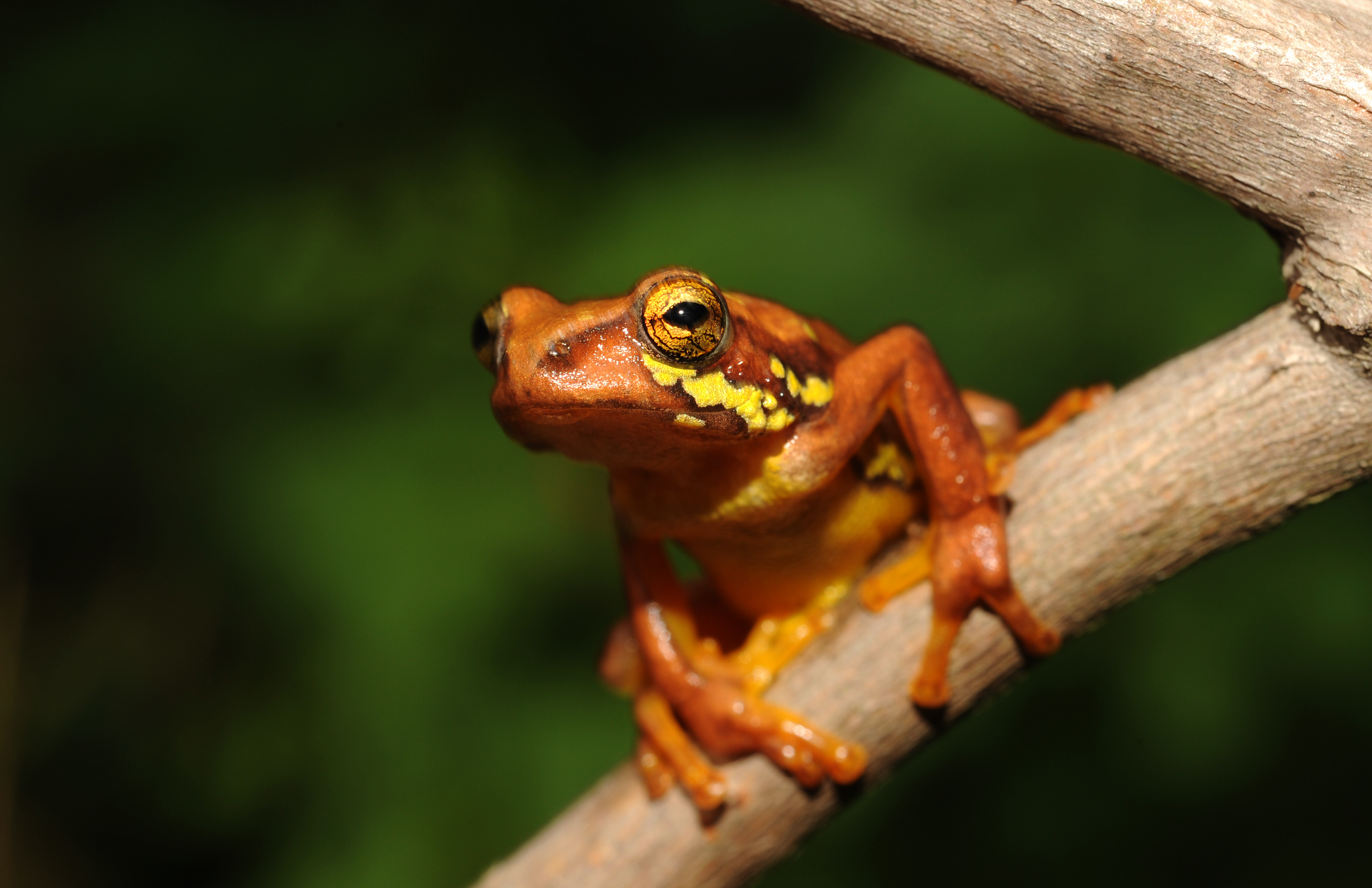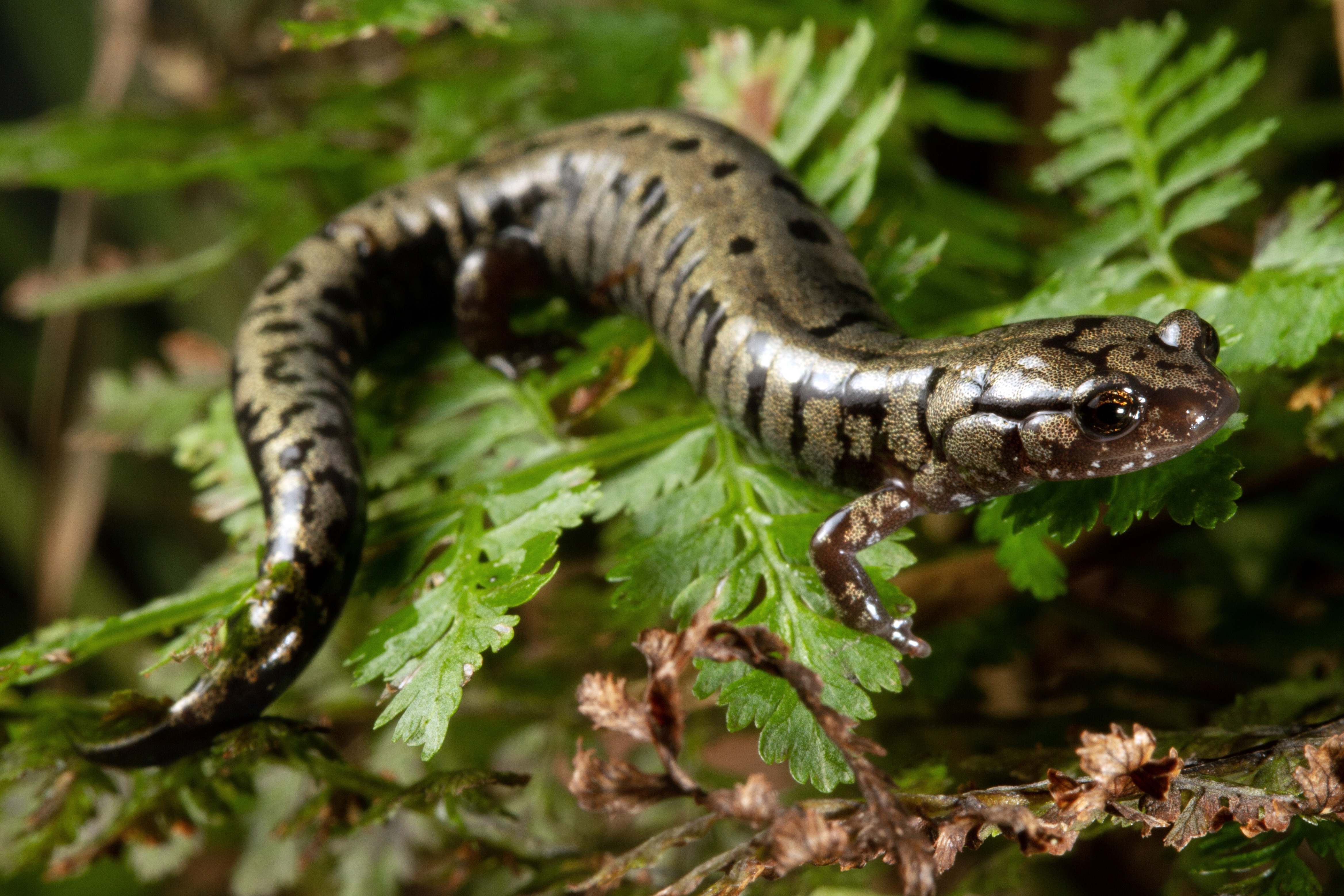Study by more than 100 researchers also finds that salamanders are the most threatened group of amphibians and new emerging disease could have devastating results for salamanders in the United States and Europe.
Habitat destruction and disease are both well-documented causes of the decline of amphibians—among the most threatened animals on the planet—but a new paper analyzing two decades’ worth of data from around the world has found that climate change is emerging as one of the biggest threats to frogs, salamanders, and caecilians. The study was published today, Oct. 4, in the scientific journal Nature.

Orange Black Tubercled Indian Microhylid (Melanobatrachus indicus), India, Vulnerable. (Photo by Sandeep Das)
The study, “Ongoing declines for the world’s amphibians in the face of emerging threats,” is based on the second global amphibian assessment, coordinated by the Amphibian Red List Authority, which is a branch of the International Union for Conservation of Nature’s Species Survival Commission’s Amphibian Specialist Group, hosted and managed by Re:wild.
The assessment evaluated the extinction risk of more than 8,000 amphibian species from all over the world, including 2,286 species evaluated for the first time. More than 1,000 experts across the globe contributed their data and expertise, which found that two out of every five amphibians are threatened with extinction. These data will be published on the IUCN Red List of Threatened Species™.
Between 2004 and 2022, a few critical threats have pushed more than 300 amphibians closer to extinction, according to the study. Climate change was the primary threat for 39% of these species. This number is expected to rise as better data and projections on species’ responses to climate change become available. Climate change is especially concerning for amphibians in large part because they are particularly sensitive to changes in their environment.

Hoogmoed’s Harlequin Toad (Atelopus hoogmoedi) is a Least Concern species occurring throughout French Guiana, Suriname and Guyana and in adjacent portions of Brazil. (Photo by © Jaime Culebras/Photo Wildlife Tours)
“As humans drive changes in the climate and to habitats, amphibians are becoming climate captives, unable to move very far to escape the climate change-induced increase in frequency and intensity of extreme heat, wildfires, drought and hurricanes,” said Jennifer Luedtke Swandby, Re:wild manager of species partnerships, Red List Authority coordinator of the IUCN SSC Amphibian Specialist Group, and one of the lead authors of the study. “Our study shows that we cannot continue to underestimate this threat. Protecting and restoring forests is critical not only to safeguarding biodiversity, but also to tackling climate change.”
Habitat destruction and degradation as the result of agriculture (including crops, livestock like cattle and livestock grazing, and silviculture), infrastructure development and other industries is still the most common threat, according to the paper. Habitat destruction and degradation affect 93% of all threatened amphibian species. Expanded habitat and corridor protection in the places most important for biodiversity is going to continue to be critical.
Disease caused by the chytrid fungus–which has decimated amphibian species in Latin America, Australia and the United States–and overexploitation also continue to cause amphibian declines. Habitat destruction and degradation, disease, and overexploitation are all threats that are exacerbated by the effects of climate change.
The study also found that three out of every five salamander species are threatened with extinction primarily as the result of habitat destruction and climate change, making salamanders the world’s most threatened group of amphibians. North America is home to the most biodiverse community of salamanders in the world, including a group of lungless salamanders abundant in the Appalachian Mountains of the eastern United States. Because of this, conservationists are concerned about a deadly salamander fungus that has been found in Asia and Europe, called Batrachochytrium salamandrivorans (Bsal), entering the Americas.

Müller’s Mushroomtongue Salamander (Bolitoglossa mulleri), a Vulnerable species from the Cuchumatanes Mountains of Guatemala. (Photo by Robin Moore / Re:wild)
“Bsal has not yet been detected in the United States, but because humans and other animals can introduce the fungus to new places, it may only be a matter of time before we see the second global amphibian disease pandemic,” said Dede Olson, a research ecologist with the USDA Forest Service, member of the IUCN SSC Amphibian Specialist Group, and co-author on the paper. “It is critical that we continue to implement proactive conservation actions to prevent the spread of Bsal into the United States, including effective biosecurity practices for wild and captive amphibians, and rapid detection and response measures. The North American Bsal Task Force includes a multi-pronged strategic plan that includes: a continental surveillance and monitoring network; research studies identifying high-risk geographies and species; and collaborative partnerships across public, private, and governmental sectors.”
The Nature paper provides an update to the 2004 landmark paper that was based on the first global amphibian assessment for the IUCN Red List, which revealed the unfolding amphibian crisis for the first time and established a baseline for monitoring trends and measuring conservation impact. According to this new study, nearly 41% of all amphibian species that have been assessed are currently globally threatened, considered critically endangered, endangered or vulnerable. This is compared to 26.5% of mammals, 21.4% of reptiles and 12.9% of birds.
Four amphibian species were documented as having gone extinct since 2004—the Chiriquí harlequin toad (Atelopus chiriquiensis) from Costa Rica, the sharp snouted day frog (Taudactylus acutirostris) from Australia, Craugastor myllomyllon and the Jalpa false brook salamander (Pseudoeurycea exspectata), both from Guatemala. Twenty-seven additional critically endangered species are now considered possibly extinct, bringing the total to more than 160 critically endangered amphibians that are considered possibly extinct. The assessment also found that 120 species improved their Red List status since 1980. Of the 63 species that improved as the direct result of conservation action, most improved due to habitat protection and management.

Spotted Reed Frog (Hyperolius substriatus), Kenya, Malawi and Tanzania, Least Concern (Photo by Tim Davenport, Re:wild)
“The history of amphibian conservation itself proves how vital this information is,” said Adam Sweidan, chair and co-founder of Synchronicity Earth. “If the IUCN Red List had been updated on a similar scale in the 1970s that it is today, we could have traced the sweeping amphibian disease pandemic 20 years before it devastated amphibian populations. It isn’t too late–we have this wealth of information, we have the Amphibian Conservation Action Plan, but plans and information are not enough. We need to act. We need to act fast.”
Conservationists will use the information from this study to help inform a global conservation action plan, to prioritize conservation actions at the global level, to seek additional resources, and to influence policy that can help reverse the negative trend for amphibians.
In light of the urgent challenges facing amphibian populations, Gina Della Togna, executive director of the Amphibian Survival Alliance and a member of the IUCN SSC Amphibian Specialist Group, emphasizes the need for immediate, collective action, ‘The rapidly escalating impact of climate change, coupled with ongoing habitat degradation and disease-related threats, demand a unified response from researchers, conservationists, and policymakers worldwide. Collaborative action based on this rigorous scientific evidence is now more critical than ever. It is through partnerships and coordinated global efforts that we can mitigate these threats and make a substantial difference in securing the future of amphibians, and ultimately, our own.”
“Amphibians are disappearing faster than we can study them, but the list of reasons to protect them is long, including their role in medicine, pest control, alerting us to environmental conditions, and making the planet more beautiful,” said Kelsey Neam, Re:wild species priorities and metrics coordinator and one of the lead authors of the Nature paper. “And while our paper focuses on the effects of climate change on amphibians, the reverse is also critically important: that the protection and restoration of amphibians is a solution to the climate crisis because of their key role in keeping carbon-storing ecosystems healthy. As a global community it is time to invest in the future of amphibians, which is an investment in the future of our planet.”

